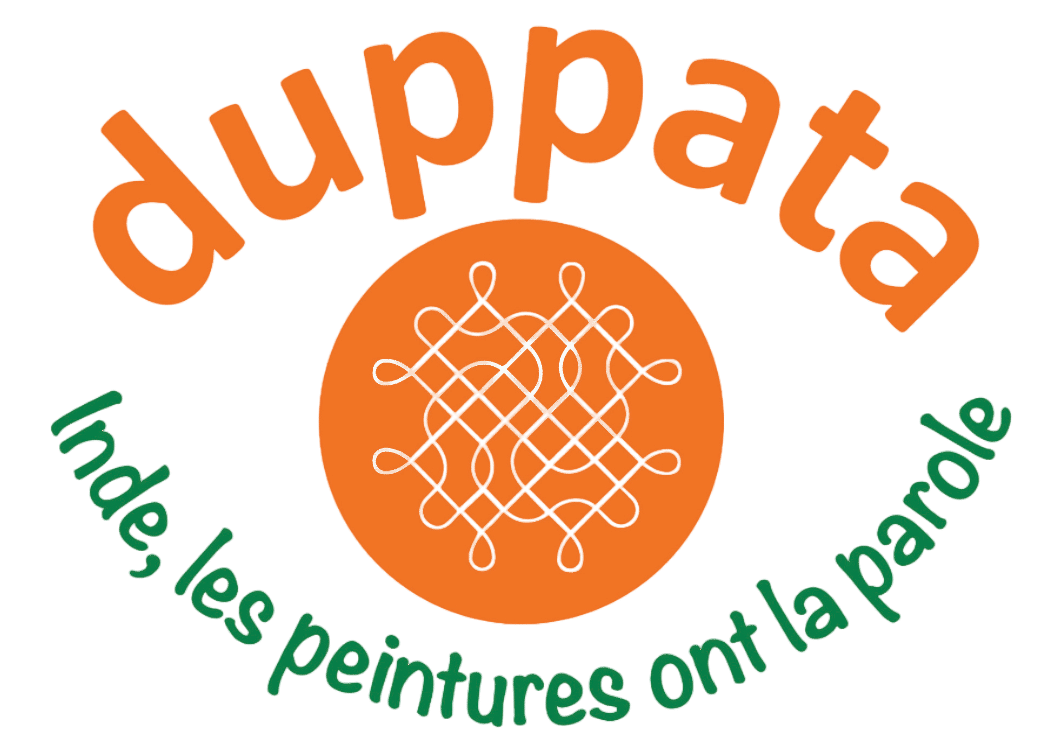« Earth to Earth »
Nous préparons pour la saison printemps-été 2025 une exposition itinérante intitulée « Earth to Earth »
Ce projet multifacette vise à honorer l’immense patrimoine culturel hérité de la tribu Pardhan Gond, dans le centre de l’Inde. Il a pour ambition de mettre en avant la relation profonde entre les Gonds et la Terre, ainsi que leurs rituels, leurs croyances et leurs traditions.
L’objectif est de créer une expérience immersive en présentant les étapes importantes de la vie, depuis la naissance de l’individu jusqu’à sa mort, grâce à une combinaison d’arts visuels, de narration et de documentation qui apportent un regard précieux sur leur mode de vie.
Le projet comprend une exposition de peintures et de photographies ainsi que des récits illustrant de manière vivante la culture Gond.
Cette exposition itinérante est le fruit du travail collectif de 4 acteurs principaux :
Mayank Shyam est un des peintres majeurs de l’art Gond contemporain (*) ; ses peintures réalisées avec les couleurs de la terre et des pigments naturels sont une contribution exclusive à ce projet collectif.
Komal Bedi Sohal propose des photographies qui dévoilent l’essence de la vie et révèlent la passion de l’artiste pour les histoires humaines,
Padmaja Srivastava écrit des textes qui confirme son immense expertise des arts vernaculaires de l’Inde et sa volonté d’en pérenniser la transmission,
L’association DUPPATA offre au public une connaissance intime des artistes vernaculaires les plus importants en ce début de XXIe siècle et permet l’adaptation du projet pour la France, grâce à l’organisation d’espaces d’exposition et de conférences.
(*) Mayank Shyam, fils du célèbre Jangarh Singh Shyam qui a marqué l’exposition « Magiciens de la terre » au Centre Pompidou en 1989, présentera aussi quelques œuvres de son père.
L’exposition sera accompagnée d’un livre d’art rassemblant les peintures, les photographies et les histoires documentées du peuple Gond. Ses 40 premières pages sont consultables à : Earth to Earth

« The symphony of marriage”
de Mayank Shyam
Format 55 x 76 cm,
pigments naturels sur papier
Child marriages were prevalent in the past, In present times these are almost rare. “Dudh Lotana” is a traditional custom amongst the Pardhan Gonds where marriages between cousins, specifically between the maternal uncle’s daughter or the boy’s mother’s brother’s daughter, are common. This practice aimed to strengthen familial ties and maintain relationships between extended family members. The proposal for marriage is initiated by the boy’s parents and sent to the girl’s parents without necessarily involving the direct consent of the boy and the girl.
This is reflective of traditional arranged marriages where the families take the lead in arranging the union. However, it’s essential to note that these practices were more prevalent in the past and may still persist in some communities with deeply rooted traditions. In modern times, there’s a global shift toward individual autonomy, especially concerning decisions about marriage and relationships. There’s a greater emphasis on consent, personal choice, and individual agency in choosing life partners.
It’s common for certain customs and traditions, like « Lamasanai”, to arise in circumstances where economic factors play a significant role. In situations where the boy’s family is facing financial challenges or poverty, these traditions serve as a way to ensure that the prospective groom is capable of providing for the bride and her family after marriage… This custom involves a period before marriage where the boy demonstrates his readiness and ability to support a family. During Lamasanai, the boy lives with the girl’s family and takes on various responsibilities, such as fieldwork, woodcutting, cattle herding, and other daily chores. This period could span around three years and is a time for the boy to showcase his qualities—intelligence, hard work, perseverance, and ability to shoulder familial responsibilities. The expectation is for the boy to prove his “manhood” by starting a family through procreation, which is seen as a demonstration of his readiness and capability to support and contribute to the girl’s family. Before marriage, the boy seeks blessings from Marra Dev, asking for virility and strength.
Les galeries souhaitant participer à ce projet peuvent contacter Christian Journet,
Tel : 06 79 01 55 83 / christian.journet@duppata.com
